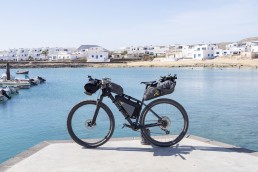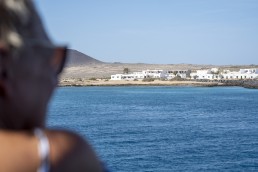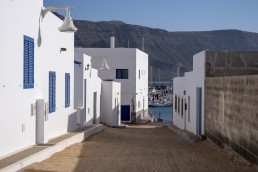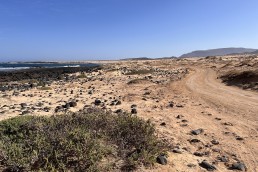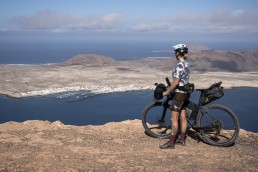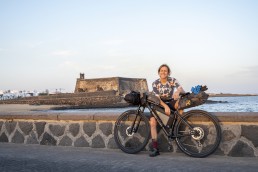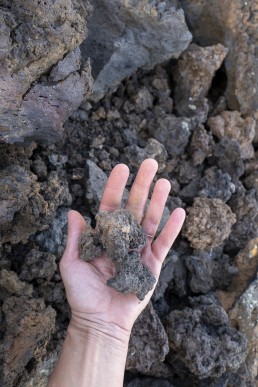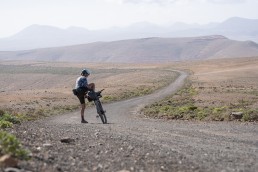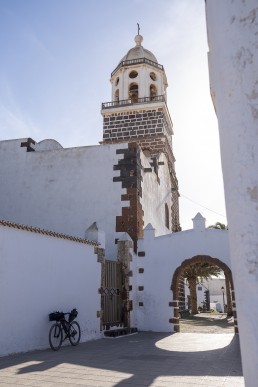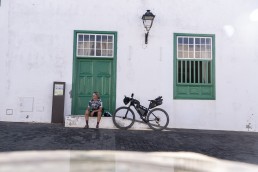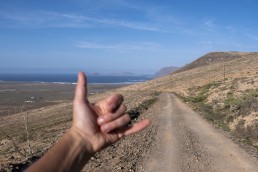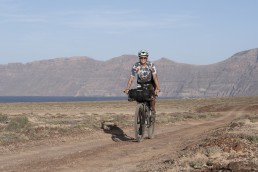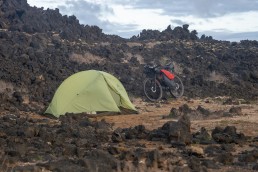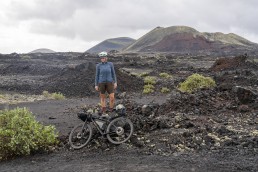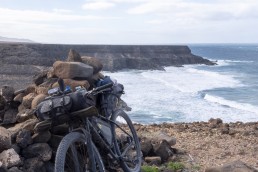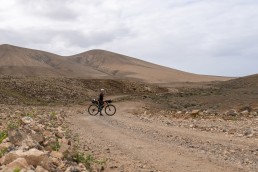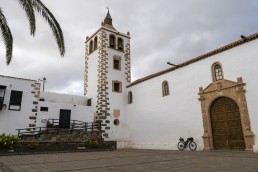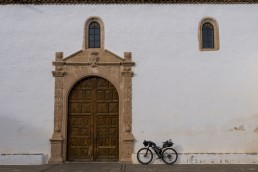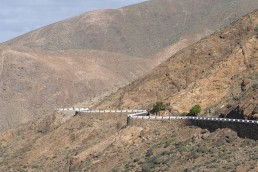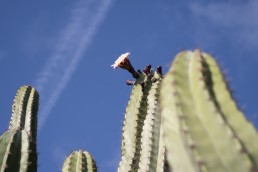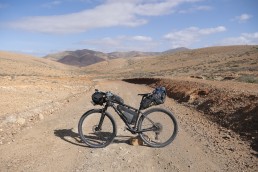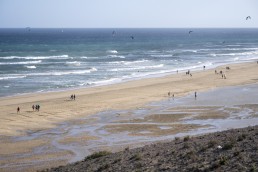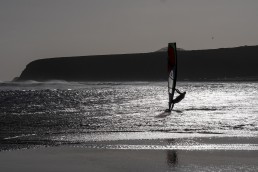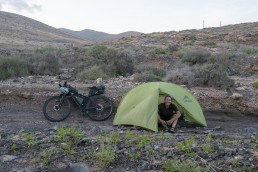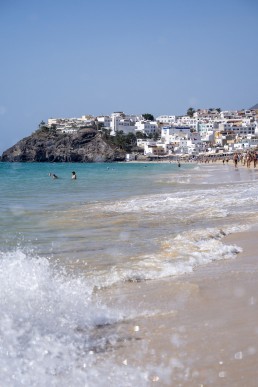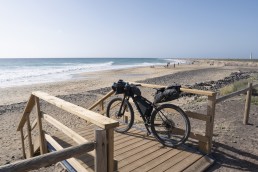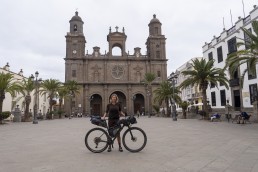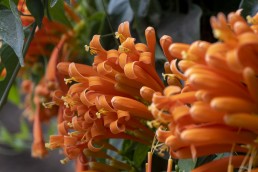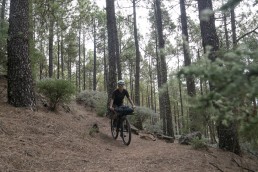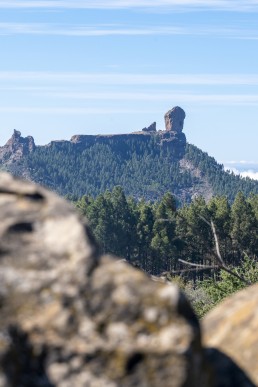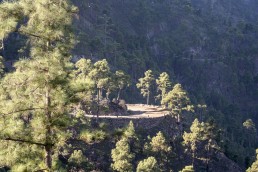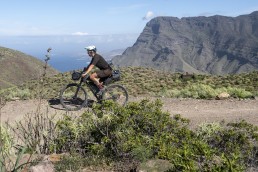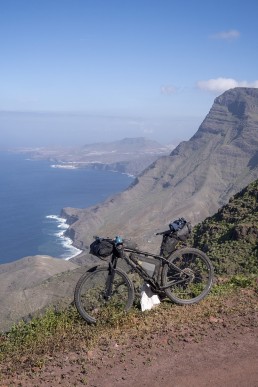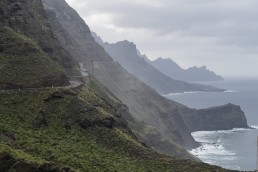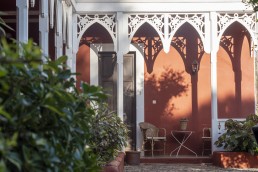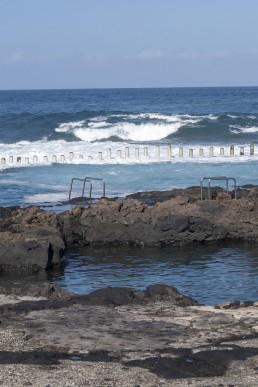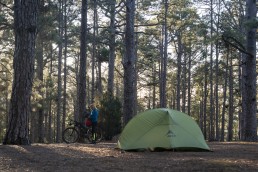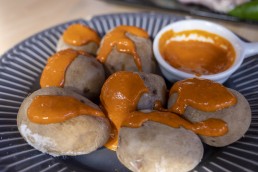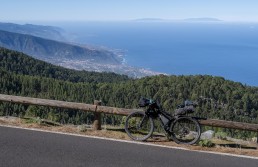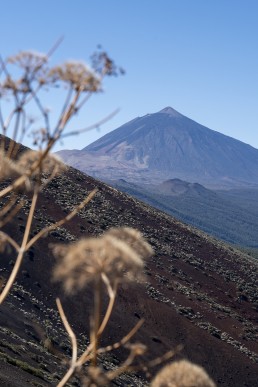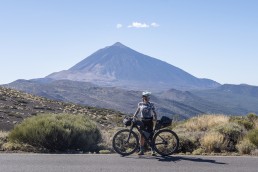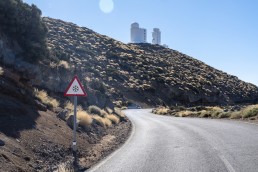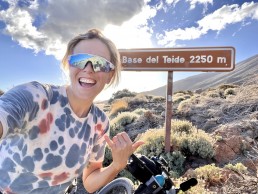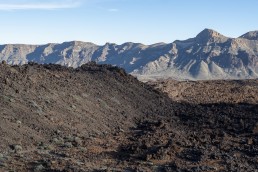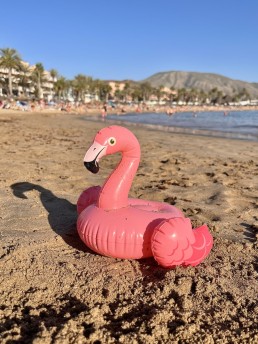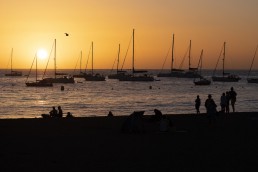The Canary Islands (known as Canaries) are a Spanish archipelago of eight islands in the Atlantic Ocean, close to the coast of Africa. They are natural paradises that offer an extraordinary variety of landscapes and possibilities for outdoor enthusiasts, and as well one of the places with the greatest biodiversity in the world. The incredible thing is that, at any time of the year, the climate is perfect!
The eight Canary Islands – of volcanic origin – are La Graciosa, Lanzarote, Fuerteventura, Gran Canaria, Tenerife, El Hierro, La Gomera, La Palma: exploring them by bicycle is a wonderful experience. An adventure between huge volcanoes and amazing beaches with crystal clear waters, luxuriant forests and dizzying cliffs. And if you look, up there is an incredible sky full of stars!
This time I travelled alone, because unfortunately Linda had to work, but it was still a rich and exciting journey, which allowed me to switch off. I cycled five of the eight islands in bickepaking mode, sometimes staying overnight in a tent, sometimes in a b&b or a pension, and using ferries to get from one island to the other. I chose to ride my MTB (a Specialized Epic) because in Lanzarote, Fuerteventura and La Graciosa I mainly cycled off road, on sandy and tracks, and also to have more agile gears for the demanding climbs of Gran Canaria and Tenerife. It’s a journey that I highly recommend, because it’s a real little adventure: each island is different, able to offer unique landscapes and experiences. And then also because when it’s winter here in Europe, there it’s warm and you can also swim!
On our Komoot profile you can find a collection with all the GPX traks. Below, in this article, my travel tips island by island, with also b&b, restaurants and other things I liked. Check out also the videos on our Youtube Channel, enjoy the adventure!
HOW TO GET THERE
There are plenty low cost and direct flights from all over Europe. I flew with Easyjet from Milan, 4 hours flight, taking my bike with me (it’s a 50€ a supplement each way)I flew to Lanzarote, where I started riding, and returned from Tenerife South. Lanzarote Airport is small and outside it has a comfortable space to reassemble the bike, it also has a large bathroom to change right near the exit. The suggested itinerary can obviously also be traveled in reverse, but due to the strong winds that can be present, I recommend that you ride it in this direction.
HOW TO MOVE
The most convenient and fast way to move between the islands is the ferry. Distances are short, there are many connections and tickets can be purchased directly at the port. However, I recommend you to take a look at the timetables of Lineas Romero and Fred Olsen Express when planning the journey.
LA GRACIOSA
This island is the little treasure of the Canaries, the least known and most peaceful of the archipelago: the perfect place for those who love nature and solitude. It’s one of the few places in Europe where there are no paved roads, there are just sandy tracks perfect for cycling in search of a wild beach.
The island is entirely a Natural Park and, at the time of writing, camping was prohibited. (However, there would be a dedicated free space, check here before leaving if they have reopened.) I stayed in Caleta del Sebo, the only village on the island, at the simple Pension Enriqueta, next door to the restaurant (35€), and I had an excellent fish dinner at El Veril. When the last ferry with the tourists leaves, La Graciosa becomes a truly magical place. To get there, take a ferry from Orzola (Lanzarote): crossing takes 20 minutes.
LANZAROTE
Lanzarote means volcanoes, lava fields, black and red rocks with extravagant shapes that contrast with the white houses of the pueblos, the amazing golden beaches and the blue of the sea. Lanzarote is also the first destination in the world to have obtained the Biosphere Responsible Tourism certification. The incredible landscapes of Lanzarote and its great gravel tracks made me fall in love immediately!
Don’t miss: the Mirador del Rio (with the statue of the famous artist César Manrique, who has redeveloped many areas of the island) and its spectacular panoramic road; the ancient city of Teguise – former capital of Lanzarote – which can be reached by riding along the old dirt road; the Castillo of San Gabriel in Arrecife; Caleta Famara; the Volcanoes Natural Park and the Timanfaya National Park… Crossing these two natural parks was like riding on the moon for me. I had no time to get to Punta del Papagayo, but it seems to be a great sport for swimming… If you manage, go to check it out. And don’t forget to taste the wine of La Geria, which is grown in the lava soil with a very special technique.
Overnights: the west coast is full of large hotels and resorts, there will be no problem to find an accommodation. I slept at the well-equipped Sands Beach Resort, where also many triathletes go to train in winter. The east coast, on the other hand, is wilder: I camped among the lava rocks near La Santa (keep in mind that free camping is not allowed in Lanzarote, so be careful: pitch your tent late and leave early!). In Teguise I had a very good lunch at La Cantina.
FUERTEVENTURA
It takes only 30 minutes by ferry from Playa Blanca (Lanzarote) to get to Corralejo.
As soon as I landed in town, that was a bit too touristy for me, I immediately set off in the direction of the quieter El Cotillo riding along a fantastic 20km dirt track overlooking the sea (with many surfers). Fuerteventura is a real paradise for beach lovers, with miles of beautiful white or golden sand beaches and crystalclear waters. It’s also famous for surfing, windsurfing and kite surfing, as it is often beaten by strong winds. In addition to visiting the northern coast, I also cycled on the famous Sotavento Beach and enjoyed some relax on Jandia Beach, near Morro Jable. As in Lanzarote, I couldn’t get to one of the most popular beaches, Cofete, but by bike it required a very long and sandy detour.
I was ready for the beauty of the beaches of Fuerteventura, but what really surprised me was the inland. Boundless barren areas, endless gravel tracks, red mountains and villages where time seems to have stopped. Do not miss the beautiful climb between Betancuria and Pajarà, and the overnight stay in Betancuria, which is without tourists in the evening. I stayed and dined at Casa Princess Arminda, a simple but very particular and welcoming structure (accommodation, dinner and breakfast €65).
Accommodation and meals: even in Fuerteventura free camping is theoretically prohibited, but I had no problems… You will also notice many surfers’ vans parked near the beaches. El Cotillo: dinner with a delicious cheviche sandwich at Pitaja and overnight at Cotillo House. Good breakfast at Cocotè Cafè. In Morro Jable: lunch at El Rayon Beach Bar directly on the beach.
The ferry to Gran Canaria leaves from Puerto de Morro Jable and takes about 2 hours: there are few departures a day, find out about the times in advance.
GRAN CANARIA
In Gran Canaria it was immediately something else! First of all, Las Palmas is a real big city, a cosmopolitan capital famous for its nightlife, where it doesn’t even feel like being on an island. Then, I immediately understood why it is called the “miniature continent”. Starting from the historic barrio Vegueta of La Palmas, a real jewel full of historic buildings, in the space of a few hours I cycled through totally different landscapes: first lush vegetation, then through very built-up cities, then again along deep gorges, peaks covered with pine forests, volcanic calderas and impressive cliffs. I only saw the beaches from afar as I climbed the mountains, but Maspalomas is the main tourist destination on the island and is characterized by beautiful dunes.
I decided to climb up the beautiful and very tiring Barranco de Guayadeque, where I had dinner and found hospitality in the cave of the Tagoror Restaurant. I then arrived at Roque Nublo, an impressive monolith that stands out on the surrounding volcanic landscape, and I visited the enchanting pueblos of Tejeda and Artenara (here I slept in one of Artenatur‘s rural structures). Finally I descended back to the coast along the incredible Tirma Road, a dirt forest road of about 20 km through the pine forests of the Tamabada Natural Park. Definitely one of the most beautiful experiences of the entire trip, because it’s one of least altered by man areas of Gran Canaria.
Not to be missed the scenic GC-200 coastal road towards Agaete, the natural pools of Puerto de Las Nieves and a night in a finca: I stayed at the amazing Hotel Rural Las Longueras in the Agaete valley.
On the islands there are several free camping areas (Zona de Acampada), such as in Llanos de la Pez, where you can also enjoy a wonderful view of Roque Nublo.
TENERIFE
The ferry takes one hour and twenty minutes to travel between Agaete-Puerto de las Nieves (Gran Canaria) and Santa Cruz de Tenerife.
Tenerife is the largest, most populated and most visited island of the Canary archipelago. It offers so many things to do… But for us cyclists the most special is certainly climbing massive Mount Teide.
The Teide volcano, with an altitude of 3.715m, is the highest peak of Spain and has been declared a World Natural Heritage Site. Whichever side you want to tackle it from, it’s a long climb with an enourmous ascent (almost 3,000m D+). But when you get to the top, the extraordinary view of the caldera, of the hundreds of cones and rocks, immediately makes you forget the effort. And at night it’s also a magical place to gaze at the stars… It is simply an incredible experience!
Not to be missed: the boiled octopus with papas arrugadas and red mojo (typical of all the Canaries) in the little restaurants just outside the Mercado de Nuestra Senora de Africa in San Cruz; a ride through the beautiful historic center of La Laguna and Vilaflor; a walk along the seafront from Los Cristianos to Playa de Las Americas… Obviously with some swimming stops!
Overnight stays: I camped in the beautiful pine forest of the Zona de Acampada de Las Raices, it’s free but you have to register on the website. In Vilaflor I dined and stayed at the characteristic El Sombrerito; in Los Cristianos I found a simple and cheap pension: Pension Playa.
At Bike Point Tenerife Shop (Las Americas), you can find for 10€ a box to pack your bike before returning home. With an additional €10 they’ll pack it for you. From there it is a 20-minute taxi ride to Tenerife South Airport, the cost of the ride is approximately €23.

